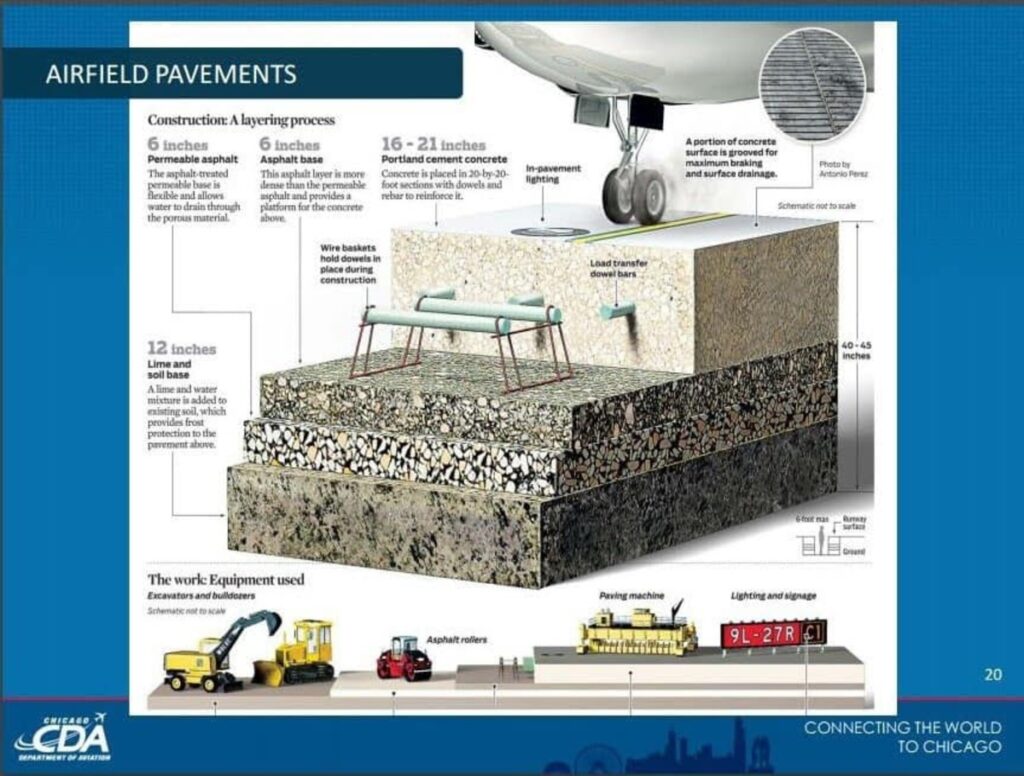
The construction material choice for runways is mostly decided either by weather conditions and/or the weight of the aircraft that will use the surface. Asphalt runways are used almost exclusively for general aviation (under 12,500 pounds gross takeoff weight). While almost all runways that are concrete are designed for use by aircraft that weight significantly more than 12,500 pounds. The necessary strength of the runway and taxiway surface is determined also by the depth of the surfacing material. I’ve seen concrete airport surfaces that can be more than a foot thick to withstand the weight of the heaviest commercial and military aircraft, The Boeing 747–8, for example has a maximum weight (max taxi weight of just under 1 million pounds, 975,000 pounds to be exact. The Russian An-225 can weight up to 1.4 million pounds and is the largest and heaviest aircraft current in service.
The number of landing gear wheels an aircraft has is partly determined also by the loading that the aircraft can place on the pavement. Generally, the more wheels the aircraft has, the more it’s weight can be distributed to the wheels, thus lessening the load each tire exerts on the runway or taxiway.
A Gulfstream business jet has sunk into the asphalt parking apron during fueling operations.
This MD-10 taxied inadvertently off the normal paved taxiway surface and sank into the weaker surface adjacent to the taxiway.
This Bombsrdier Regional Jet sank into the asphalt taxi surface because the excessive air temperature had softened the asphalt, reducing its strength.
Author – Ken Whitfield





